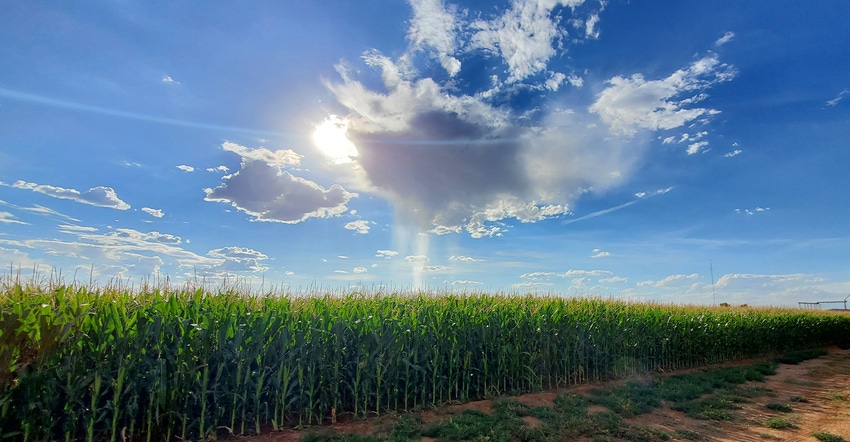
Price hikes on family farms spurred a nitrogen fertilizer costs and impact study with results released this week. The analysis, completed by the Ag and Food Policy Center at Texas A&M University (AFPC), notes several concerning factors appearing to drive fertilizer prices.
“As part of this study, we conducted a historical analysis going back to 1980 and found that fertilizer costs tend to go up when corn revenues increase,” Joe Outlaw, AFPC co-director, says. “Notably, these prices tend to go up exponentially even after accounting for natural gas prices and higher demand.”
Fertilizer expenses account for approximately 36% of all corn farms' operating costs, according to the AFPC analysis. Texas Panhandle corn producer Dee Vaughan says his farm has felt the impact of climbing prices.
 /corn/higher-fertilizer-prices-not-linked-to-natural-gas
/corn/higher-fertilizer-prices-not-linked-to-natural-gas
“In just over two years, I’ve seen an astonishing 264% increase in the cost of nitrogen fertilizer alone,” Vaughan says. “My farm’s overall fertilizer cost has increased 241%.”
See, Higher fertilizer prices not linked to natural gas
Farms are experiencing this price hit regardless of location. Jim Sugarek who farms near Bee County in South Texas also saw a 264% increase in fertilizer costs on his family farm.
“As I prepare to put seed in the ground in just a few weeks, I couldn’t wait to see if these price hikes would settle to something close to a normal year – much less risk them surging even more,” Sugarek says.
In the study’s historical analysis of the nitrogen fertilizer industry, four manufacturers, including CF Industries, Nutrien, Koch and Yara-USA, account for approximately 75% of the total domestic nitrogen fertilizer production.
Inflation and supply chain issues experienced nationwide have been cited by the industry as key factors impacting farmers’ fertilizer prices. However, the study shows there are some trends to be considered to the contrary.
Namely, the industry indicates natural gas accounts for 70% to 90% of variable production costs for nitrogen fertilizer. The study finds that the increase in one type of nitrogen fertilizer, anhydrous ammonia, that the value of natural gas accounts for only 15%, or $102, of recent price increases.
“The study shows that once the value of natural gas has been subtracted from nitrogen, the residual tends to closely track the price of corn,” Outlaw notes.
While this correlation could nod to increased demand for nitrogen products as corn prices rise, it could also be “due to the exercise of market power by nitrogen product manufacturers,” the study asserts.
“Our findings raise serious questions and clearly help explain the frustration with this situation farmers are feeling nationwide,” Outlaw says.
The study was commissioned by state corn checkoffs and associations in Texas, Missouri, Colorado, Georgia, Illinois, Indiana, Iowa, Kansas, Kentucky, Maryland, Michigan, Minnesota, Nebraska, New York, North Carolina, North Dakota, Ohio, South Carolina, South Dakota, Tennessee and Wisconsin.
As noted in National Corn Growers Association’s release today, looming tariffs would add insult to injury. The AFPC study states, “Any import tax on nitrogen fertilizers would raise prices for both domestically produced and imported fertilizer by the full amount of the tax rate multiplied by the pre-tax price.”
“Fertilizers play an integral role in a crop’s health and success,” Vaughan concludes. “The steep price hikes hitting farm country is alarming for corn farmers who count on nitrogen and other fertilizers for their plants to thrive. The breadth of how far-reaching this is impacting farmers is telling that something needs to be done to keep America’s farmers from bearing the burden of an industry pushing the limit of how thin they can cut a farms’ margins.”
Source: is Texas Corn Producers, which is solely responsible for the information provided and is wholly owned by the source. Informa Business Media and all its subsidiaries are not responsible for any of the content contained in this information asset.
About the Author(s)
You May Also Like




